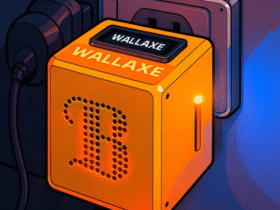Under this new proposal, the disinflation rate would double from 15% to 30% annually.
The proposal would accelerate the dilution of holders and impact small validators.
A new improvement proposal for Solana, identified as SIMD-0411, seeks to modify the rate at which the inflation of the native SOL token decreases, doubling the annual “deflation” speed established in the protocol.
The initiative was presented on November 25 and must be discussed by the community. In summary, points to double the annual rate of disinflation (from the current 15% to 30%) so that SOL inflation reaches its expected minimum rate sooner.
Its authors are two relevant developers of this ecosystem, known under the pseudonyms Lostin and 0xIchigo and who work for Helius (an infrastructure provider for Solana that offers APIs to build applications, on-chain data indexing services, and others).
A change in the broadcast schedule
Currently, Solana uses a decreasing inflation model: each year the rate of issuance of new SOL is reduced by 15%.
This rhythm, defined as the disinflation rate, would determine that the system takes approximately 6.2 years to reach its “terminal” inflation ratelocated at 1.5%.
The proposal SIMD-0411 poses double that disinflation rate from 15% to 30% annually. The objective is to accelerate the arrival at the final point, without modifying the minimum inflation foreseen in the original design.
The following graph illustrates the difference between maintaining the current disinflation of 15% per year (red line) or adopting the 30% pace suggested by SIMD-0411 (blue line).


In this image, both curves start from the current level of inflation, but diverge quickly: with doubled disinflation, inflation reaches the terminal rate of 1.5% in about 3.1 years, while the current scheme reaches the same point only after 6.2 years.
According to the document presented, this modification does not introduce new mechanisms or complex alterations: it would only change the parameter that regulates the speed at which inflation decreases.
For the authors, this maintains system predictability and allows the impact of the adjustment to be clearly evaluated.
This new proposal joins another that also suggested a change in the issuance of SOL, but which, as reported by CriptoNoticias, was not approved.
Impact on holders and Solana staking
Solana inflation has a double effect for those who have SOL in their wallet.
On the one hand, it distributes new coins as rewards to validators and those who stake. On the other hand, by increasing the total supply of tokens, you gradually reduce the percentage of the pie that you corresponds to each holder who is not staking.
In practice, those who do not delegate their SOL, each year that passes, their participation in the network is worth a little less. With the current proposal (-15% annual disinflation) this dilution is slow; with the change to -30%, that “silent loss” for passive holders it accelerates and reaches the final level of 1.5% sooner.
Therefore, the speed at which inflation falls affects both the overall economics of the token and the incentive structure of staking, the mechanism by which users delegate their SOLs to validators.
The developers estimate that accelerating disinflation would generate, over a six-year horizon, a reduction close to 3.2% in the total supply of SOL regarding the current schedule.
How does it affect Solana validators?
They also expect staking rewards to decline faster, which could raise relative costs for validators with lower delegated volume and, in specific cases, affect their profitability.
The other side of the coin is the impact on validators and, although the authors mitigate the risk of centralization, they themselves They calculated the damage to small validators.
The proposal calculates that, as inflation rewards fall faster, nominal staking returns would fall from the current 6.41% to 5.04% in the first year, 3.48% in the second and 2.42% in the third (in a scenario with 66% staking participation, the closest to the current one).
That means that small or medium-sized validators will need more delegated SOL just to cover their fixed costs (servers, governance voting, etc.).
According to the authors’ estimates, in the first year 10 of the current 845 validators would go from profitable to unprofitable; in the second there would be 27 and in the third 47.
Although the number seems manageable, the cumulative effect is greater pressure on smaller operators, which could reduce the diversity of the validator pool and potentially favor a concentration on the largest nodes or better capitalized.






Leave a Reply